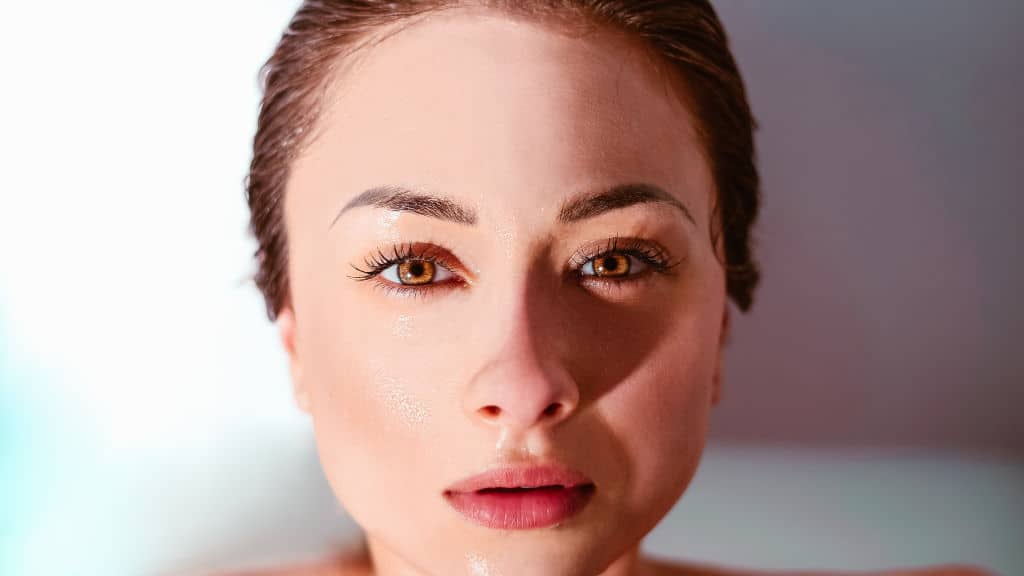Retinol proves to be a very effective treatment to prevent aging. It is also handy for improving skin tone and texture. There are also many myths surrounding it’s effectiveness and how it works.
What is the real secret to using this healthy skin vitamin, and should it be used at all times? There are ten benefits of retinol most women miss.
The Origin of Retinol
Learning more about the origin of this viable source of vitamin A is essential because it’s vitamin A1. The difference between these two types of vitamin A is critical because the chemical composition for A1 and A2 are different.
Vitamin A is generally found in animal meat sources. Supplementation is essential when a deficiency has been noted.
Dermatologists tout the importance of this unique vitamin because it helps produce beautiful skin, especially for those who are deficient
The poorest countries are at risk for low levels of vitamin A. Those who are at the most significant risk for deficiency should get large doses of this for their health’s sake.
Another important aspect of health to consider is the eye’s tear production. Many commercial preparations claim to clear up the issue of “dry eye.” So when someone is unable to produce tears, it could be linked to a lack of vitamin A. Although there is also a vitamin A2, there are three active forms of this.
- Retinol
- Retinal
- Retinoic Acid
The body will take this form of vitamin A, and convert it into the other two forms, retinal and retinoic acid.
Good sources of this vitamin that supports healthier skin, nails, and body include fish, certain types of meat, and some dairy products.
This connection is why many doctors insist that patients who want to improve the look of their skin eat foods that can be converted into retinal and retinoic acid to work from the inside out.
10 Benefits of Retinol Most Women Miss
Many women know that retinol is good for the skin. However, they might not understand wholly specifically how it can benefit them. Here are ten top benefits.
1 – Decreases fine lines and wrinkles
It converts to retinoid once inside the body and is utilized to reduce fine lines and wrinkles. Once the vitamin A1 converts into retinoids, it will produce collagen, which in turn will reduce fine lines and wrinkles.
It is no wonder that women are always hanging on every word during a commercial about products that contain retinal. These are clearly marketed to women who are concerned about aging skin and how it may impact their appearance.
This outcome means that most ladies are looking for the best creams and lotions containing this skin-loving ingredient.
2 – Creates healthy new blood vessels in the skin.
These topical creams and lotions are also known for aiding in the development of healthy new blood vessels.
This derivative of vitamin A helps in this development. When the blood vessels are plentiful, and they are working, they can bring healthy color to the skin.
Think of it as the standard for circulation for your face. Once you begin to think of it this way, you’ll realize that because it encourages circulation, it’s the key to healthier skin and face all around.
“Glowing skin is a result of proper skincare. It means you can wear less makeup and let skin shine through.” Michael Columbus
3 – It improves pigmentation.
Although vitamin A1 converts into retinal and retinoic acid, it’s the topical product you can use on your skin that helps your skin with color. This fabulous vitamin A1 is known for improving the skin’s pigmentation.
This means that the skin will ultimately look evener. The difference could be in someone having skin that appears blotchy, to someone who’s skin is one solid color.
4 – Reduces the appearance of sunspots.
What are those spots on your face and arms that aren’t age spots? They are called “sunspots.” These spots can cause your face to appear darker than they should.
The cells are then refreshed, which in turn is known as “cell turnover.” This is important because it has everything to do with why your skin will begin to change. Cells that are renewed will ultimately create a smoother, more refined look.
5 – It firms your skin
. Did you know that retinol causes the skin to become firmer as well? It’s no surprise that this is the number one skincare agent added to some of the finest skin care products in the world.
The production of collagen makes the natural fibers in your skin and the tissues more supple and firm. This is another benefit for those concerned about the aging process.
6 – Retinol Offers protection from pollution.
Skin is always exposed to the elements. It is impossible to completely protect your skin from the weather, pollutants in the air, and other elements we are faced with on a daily basis.
As long as there is an industrial environment for this industrial world, there will be a need for this form of vitamin A.
7 – Fights acne.
Although it seems most of the advertisement for this miracle skincare ingredient is for fighting the signs of aging, it also works to fight acne.
It is important to keep the skin healthy, and that means keeping the skin clear of acne. Those who use it for this purpose have reported a noticeable difference in as little as three weeks.
8 – Acts as a protective barrier when applied after moisturizer.
Moisturizer is not necessarily the only barrier you can put on your face or body. When added to the face after moisturizer has been applied, this may create a barrier to prevent irritation.
Everyday elements can impact whether or not your face becomes irritated. This is especially true during winter. The cold weather and blowing wind can cause the face to become red and chapped.
9 – Prevents crows feet.
Crows’ feet begin to form over time as the body ages. Typically the earliest women tend to notice this change around their eyes in their late thirties to their early forties.
The benefit is obtained when this miracle ingredient softens the skin and helps release the look of crow’s feet. There are various types of serums and lotions available for this use.
10 – Promotes cellular renewal.
Last but not least, this skincare compound causes a cellular turnover. This means that the cells that are on the surface will die, and new ones will be generated.
Every day you lose skin cells. This is because the skin is constantly shedding old skin cells, and new healthier ones develop. This process slows down as you age.
Creams and lotions derive from this component help the skin stay clear by getting your skin cells to turn over.
 Here is the research to support retinol as a useful skin treatment
Here is the research to support retinol as a useful skin treatment
Is there research to support that this ingredient works for your skin?
There is plenty of research conducted on this derivative of vitamin A works, but bear in mind that most of it pertain to caring for your skin and the aging process.
There are two types of aging in the area of dermatology.
- Premature aging
- Aging that is chronological
It’s important to read the research pertaining to the reason you desire to use it. Skin is the largest organ of the body, not just a covering.
Skin is important for many things, not just how you look. Maintaining the proper temperature is one little known function of the skin.
The importance of the other components like retinoids was discovered as early as World War I. It was during the late 60’s that a project was launched to determine how manipulation of the chemical components would benefit the body as a whole.
It wasn’t until 2001 that retinoids were introduced as a viable solution in dermatology. Retinoids combine the derivative of vitamin A, as well as retinoic acid, and other related chemical components.
The positive outcomes on research conducted on the anti-aging show that after 12 weeks of treatment, fine lines and wrinkles improve.
Controlled clinical trials are often the best way for researchers, dermatologists, and others to learn more about how to use this to improve their skin and how these components of vitamin A affect them.
There are also many derivatives of retinal and retinoids that are being studied to determine how they can be better utilized to benefit one’s skin health.
Final Thoughts: Give Retinol A Try for Healthy and Glowing Skin
The three components of vitamin A, including retinol, retinal, and retinoids, may all be used for improving the look and feel of your skin.
While these three things all serve a different purpose, you must understand what is best for using on your skin.
You don’t always need the aid of a dermatologist to enjoy glowing, healthy skin. However, if you need an extra boost, even after trying retinol, you might choose to set an appointment to seek even more advice.




















